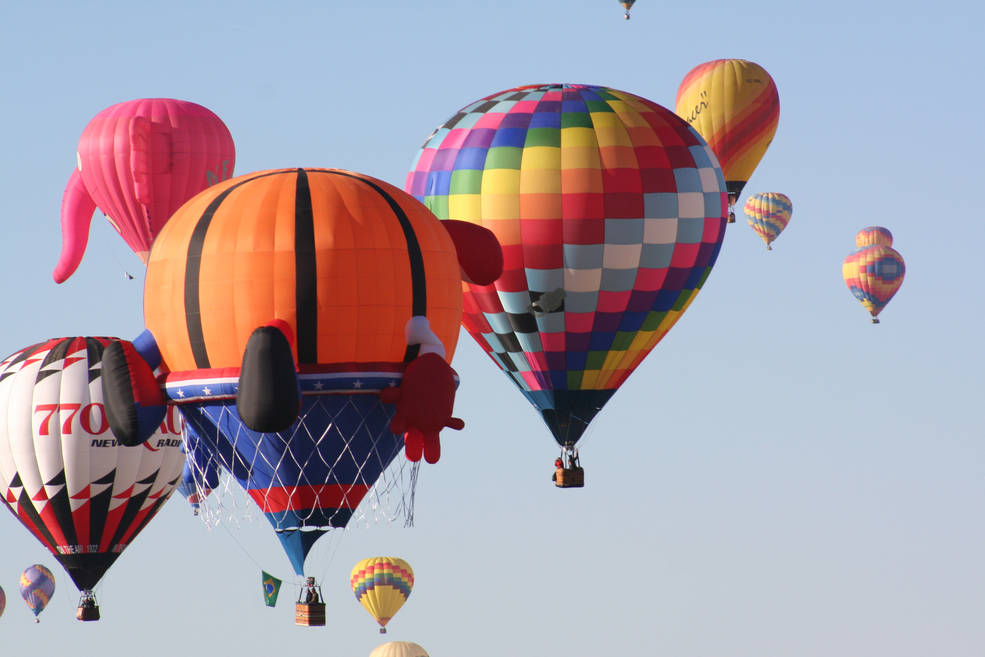Get ready for an exciting adventure up in the clouds as we explore the world of hot air ballooning. Imagine floating gently through the sky, guided only by the wind, surrounded by the breathtaking views below. In this captivating article, we’ll delve into the fascinating details of hot air balloons, from the construction of the envelope to the record-breaking flights in history. Discover the magic and wonder of this timeless mode of transportation that has captivated the hearts of people since its first flight in 1783. So buckle up and prepare to be transported to new heights as we embark on this thrilling journey into the world of hot air ballooning.
History of Hot Air Ballooning
Hot air ballooning has a rich and fascinating history that dates back to the late 18th century. The first untethered manned hot air balloon flight took place on November 21, 1783, in Paris, France. It was Jean-François Pilâtre de Rozier and François Laurent d’Arlandes who had the privilege of experiencing this groundbreaking event. As their balloon, known as the Montgolfier, ascended into the sky, a sense of awe and wonder filled the crowd below. This historic flight marked the beginning of a new era in aviation.
Since the 1950s, hot air balloons have been used for recreational purposes. This era witnessed an increasing interest in hot air ballooning as a thrilling and leisurely activity. The advancements in technology and the growing popularity of recreational ballooning led to the establishment of various hot air ballooning clubs and organizations. People from all walks of life started to take part in this exciting adventure, creating unforgettable memories in the sky.
Components of a Hot Air Balloon

A hot air balloon consists of several key components that work together to create the beautiful and awe-inspiring sight we know and love.
The Envelope
The envelope is the heart of the hot air balloon. It is a large, bag-like structure made from durable and lightweight materials such as ripstop nylon or dacron. This fabric is specifically chosen for its strength and heat resistance. The envelope is designed to contain the heated air that allows the balloon to float in the sky. The fabric is often coated with a sealer to increase its durability and longevity.
The Gondola or Wicker Basket
The gondola, also known as the wicker basket, is suspended beneath the envelope and serves as the platform for passengers and the source of heat. Traditionally made from wicker, this sturdy and lightweight material allows for a comfortable and secure flight experience. The gondola is meticulously designed with safety in mind, featuring high sides and a secure floor to prevent any accidental falls.
The Source of Heat
Hot air balloons rely on a source of heat to generate the hot air that lifts them off the ground. The most common source of heat is an open flame caused by burning liquid propane. The burner, located at the center of the gondola, is responsible for heating the air inside the envelope. By continuously adjusting the intensity of the flame, pilots can control the balloon’s ascent, descent, and direction.
Construction of Modern Hot Air Balloons
Over the years, hot air balloon construction techniques and materials have evolved significantly, leading to the development of modern balloons that are safer, more efficient, and longer-lasting.
Materials Used
Modern hot air balloons are typically constructed using high-quality materials such as ripstop nylon or dacron for the envelope, stainless steel for the burner assembly, and aircraft-grade aluminum for the gondola. These materials offer the perfect balance of strength, flexibility, and durability, ensuring a safe and comfortable flight experience. The use of advanced materials also allows for easier maintenance and repair, further extending the lifespan of the balloon.
Inflation Process
The process of inflating a hot air balloon involves a careful and precise sequence of steps. Before the actual inflation, the envelope is partially inflated with cool air using a large fan. This pre-inflation step ensures that the envelope is properly aligned and eliminates any potential wrinkles or creases. Once the envelope is partially inflated, the pilot ignites the burner, introducing the heat that will fill the envelope with hot air. As the envelope fully inflates, the balloon begins to rise, ready for flight.
Flying a Hot Air Balloon

Flying a hot air balloon requires skill, knowledge, and a deep understanding of the principles of aerodynamics. Here is an overview of the key aspects involved in flying a hot air balloon.
Preparing for Flight
Before each flight, the pilot carefully assesses the weather conditions to ensure safe flying conditions. The envelope is thoroughly inspected for any signs of damage or wear. The gondola is checked for structural integrity, and all necessary equipment, such as radios and navigation instruments, is tested. The pilot must also ensure that all passengers are briefed on safety procedures and are aware of what to expect during the flight.
Launching the Balloon
Launching a hot air balloon requires a dedicated team of crew members. The balloon is laid out on the ground, and the envelope is carefully spread out. The gondola is securely attached, and the burner assembly is prepared for ignition. With the burner ignited, the envelope starts to fill with hot air, gradually pulling the balloon upright. Once the balloon is fully upright and stabilized, the pilot gives the signal to the crew to release the restraining lines, and the balloon gracefully lifts off the ground.
Controlling the Balloon
Although hot air balloons cannot be steered like traditional aircraft, pilots have some control over the direction and altitude of the balloon. By heating or cooling the air inside the envelope, pilots can induce ascents or descents, allowing them to catch different wind currents at various altitudes. By carefully analyzing the wind patterns at different altitudes, pilots can navigate the balloon to their desired destination, making the most of the available winds.
Landing the Balloon
Landing a hot air balloon requires precision and clear communication between the pilot and the ground crew. The pilot selects a suitable landing spot based on the wind conditions and available landing options. As the balloon descends, the pilot controls the rate of descent by adjusting the heat and using other techniques such as “dipping” the basket. The ground crew assists in the landing process, ensuring a smooth and safe touchdown. Once on the ground, the envelope is deflated, and the balloon is carefully packed up for transportation.
Safety Measures in Hot Air Ballooning
Safety is of utmost importance in hot air ballooning, and strict measures are in place to ensure a safe and enjoyable experience for everyone involved.
Pilot Certification and Training
Hot air balloon pilots undergo rigorous training and certification processes to ensure they possess the necessary skills and knowledge to operate a balloon safely. They are trained in all aspects of balloon operation, including navigation, weather analysis, emergency procedures, and passenger safety. Pilots must also maintain their certifications through regular flight reviews and ongoing education, staying up-to-date on the latest safety practices and regulations.
Weather Conditions
Weather conditions play a crucial role in hot air ballooning, and pilots must carefully assess the weather before each flight. Balloons are most commonly flown in calm, stable weather conditions, with wind speeds below a certain threshold. Pilots utilize various weather forecasting tools, including ground-level wind readings and upper-level wind predictions, to make informed decisions about whether or not it is safe to fly. If weather conditions deteriorate during a flight, pilots have procedures in place to safely land the balloon.
Emergency Procedures
Hot air balloon pilots are trained to handle a range of emergency situations, although such incidents are rare. These procedures include emergency landings, power line avoidance, and dealing with unexpected weather changes. Pilots are also trained to prioritize passenger safety in the event of an emergency, ensuring that everyone on board remains calm and informed throughout the situation.
Hot Air Ballooning Competitions and Records
Hot air ballooning has evolved into a competitive sport with various championships and competitions held worldwide. These events showcase the skills and abilities of balloon pilots and provide a platform for friendly rivalry and camaraderie.
Championships and Competitions
The world of hot air ballooning is home to numerous championships and competitions. These events test pilots’ abilities in precision flying, target landing, and distance flights. Some of the most well-known competitions include the Gordon Bennett Cup, the US National Hot Air Balloon Championship, and the Coupe Aéronautique Gordon Bennett.
Noteworthy Records
Over the years, hot air ballooning records have been set and broken by daring pilots pushing the boundaries of what is possible in the skies. One of the most remarkable records was set in 2005 when Vijaypat Singhania reached an astounding altitude of 21,027 meters, making it the highest hot air balloon flight ever recorded. These records not only showcase human achievement but also inspire future generations to dream big and explore new horizons.
Hot Air Ballooning as a Thrilling Experience
There is something undeniably magical about the experience of flying in a hot air balloon. From the unique sensations to the panoramic views, hot air ballooning offers an adventure like no other.
The Unique Sensations
As the balloon gracefully lifts off the ground, a sense of weightlessness and freedom envelops you. The gentle motion of the balloon, combined with the silence of the sky, creates a serene and surreal atmosphere. The feeling of going wherever the wind takes you, without the constraints of traditional aviation, is truly remarkable.

Panoramic Views
From the vantage point of a hot air balloon, the world unfolds beneath you in breathtaking detail. The panoramic views from high above reveal a different perspective of the landscapes, cities, and natural wonders below. The peacefulness of the skies allows you to appreciate the beauty of the world in a way that is simply impossible from the ground.
Peaceful and Tranquil Journey
Unlike other forms of aviation, hot air ballooning offers a tranquil and unhurried journey through the sky. There are no engines roaring in the background or distractions from the outside world. It is a chance to disconnect from the fast-paced modern world and immerse yourself in the beauty and tranquility of nature. Whether it’s floating gently over countryside or cruising above majestic mountains, every hot air balloon flight is a peaceful and rejuvenating experience.
The Popularity and Growth of Hot Air Ballooning
Hot air ballooning has seen a remarkable surge in popularity over the years, both as a recreational activity and as a form of tourism. The unique appeal of these majestic balloons has attracted people from all corners of the globe, contributing to the growth and development of the industry.
Hot Air Ballooning Tourism
Hot air ballooning has become a sought-after activity for tourists in many parts of the world. Beautiful landscapes, historical landmarks, and scenic areas have embraced hot air ballooning as a way for visitors to experience their surroundings from a completely different perspective. This growth in hot air ballooning tourism has led to the establishment of dedicated balloon ride companies and the development of ballooning infrastructure in various regions.
Economic Impact
The rise of hot air ballooning has had a significant economic impact on local communities and regions. Ballooning events, festivals, and competitions often attract large numbers of tourists, bringing in additional revenue for local businesses, such as hotels, restaurants, and souvenir shops. The increased interest in hot air ballooning has also created employment opportunities within the industry, ranging from pilot positions to ground crew and maintenance staff.
Environmental Impact of Hot Air Ballooning
While hot air ballooning offers an eco-friendly form of aviation, there are still considerations to be made regarding its impact on the environment. Balloon operators and enthusiasts are committed to minimizing their footprint and preserving the natural beauty that surrounds them.
Use of Propane and Its Effects
Hot air balloons rely on liquid propane to generate the heat required for flight. While propane is a relatively clean-burning and efficient fuel, its combustion does release carbon dioxide (CO2) into the atmosphere. To mitigate the environmental impact, balloon operators prioritize fuel efficiency and adhere to strict guidelines when handling and storing propane. Efforts are also made to offset carbon emissions through various initiatives, such as tree planting and supporting renewable energy projects.
Respecting Wildlife and Natural Areas
Hot air balloon operators understand the importance of respecting wildlife habitats and protected natural areas. Pilots maintain a safe distance from sensitive areas and wildlife, ensuring minimal disturbance to the environment. They also adhere to strict guidelines regarding take-off and landing zones, avoiding environmentally sensitive areas and nesting grounds. By prioritizing environmental stewardship, the hot air ballooning community aims to protect and preserve the natural wonders that make each flight so awe-inspiring.
Conclusion
Hot air ballooning has a rich history and has grown into a beloved activity and thrilling adventure for people around the world. The first untethered manned hot air balloon flight in 1783 marked the beginning of a new era in aviation, and since then, hot air ballooning has become an exhilarating recreational pursuit. The components and construction of modern hot air balloons have evolved, prioritizing safety, durability, and comfort. Flying a hot air balloon requires skill and knowledge, as pilots navigate the skies and guide their balloons to serene landings.
Safety measures are crucial in hot air ballooning, with pilots undergoing rigorous training and certifications, closely monitoring weather conditions, and adhering to emergency procedures. Hot air ballooning offers unique sensations, panoramic views, and a peaceful journey through the skies. It has gained popularity as a thrilling experience, attracting tourists and contributing to the economic growth of various regions.
While enjoying the beauty of hot air ballooning, its environmental impact is considered and minimized through the responsible use of propane and careful respect for wildlife and natural areas. Ultimately, hot air ballooning provides an incredible opportunity to explore the skies, connect with nature, and create unforgettable memories in this remarkable form of aviation.



